712-foot observation tower proposed for Central Park would also clean the reservoir
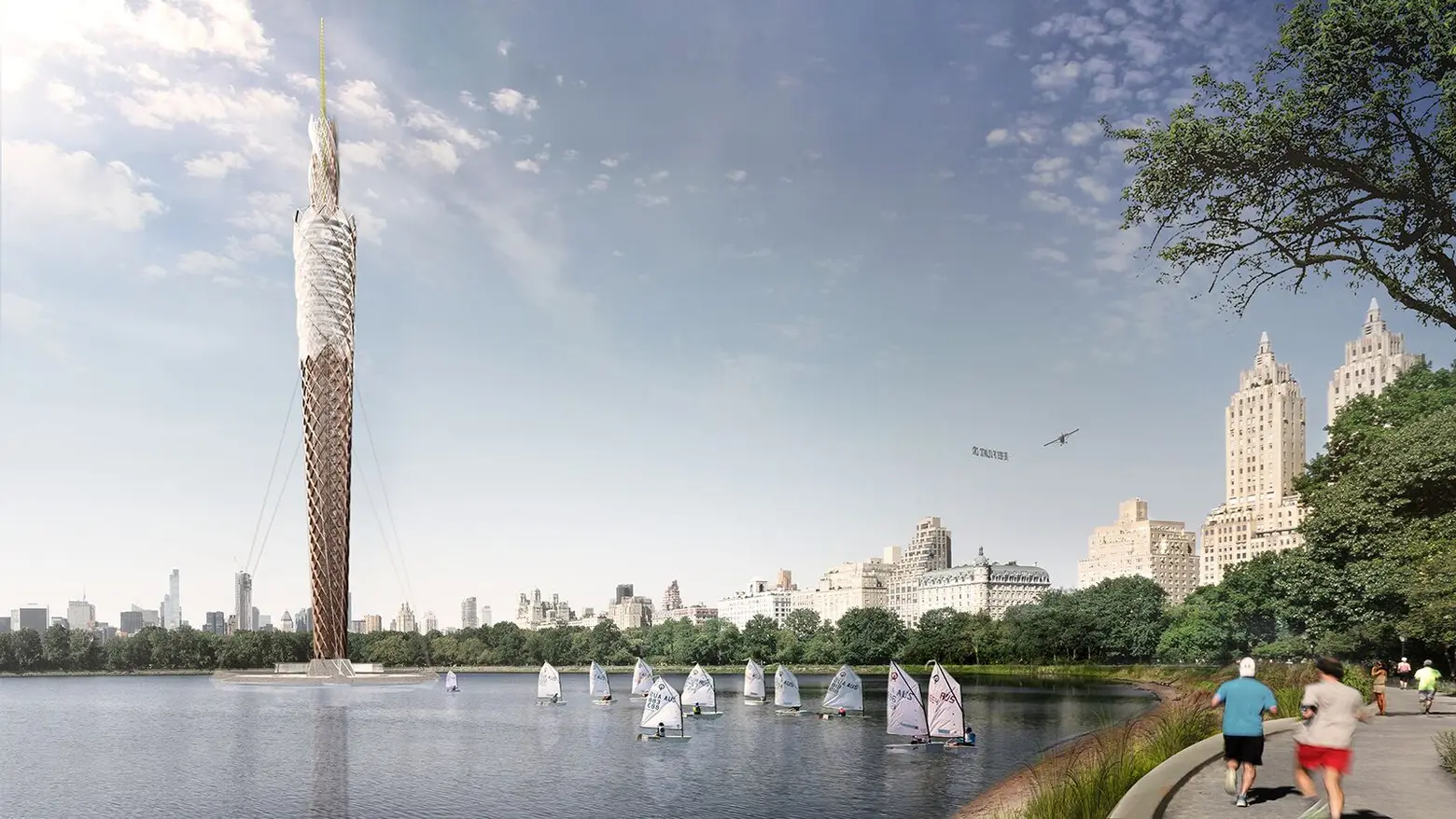
Rendering via DFA
Local creative studio DFA is proposing a 712-foot public observation tower in Central Park that would double as a sustainable filtration system to clean the decommissioned and hazardous Jacqueline Kennedy Onassis Reservoir and turn it into a non-toxic, useable freshwater pond. The firm says their idea is “in response to [the] growing demand for public bird’s eye views in the world’s tallest cities and an increasing need for innovative environmental cleanup strategies.” Though meant to be temporary, the prefabricated tower would be the world’s tallest timber structure if completed, featuring a 56-foot-wide viewing platform and a glass oculus that showcases the tower’s functional elements.
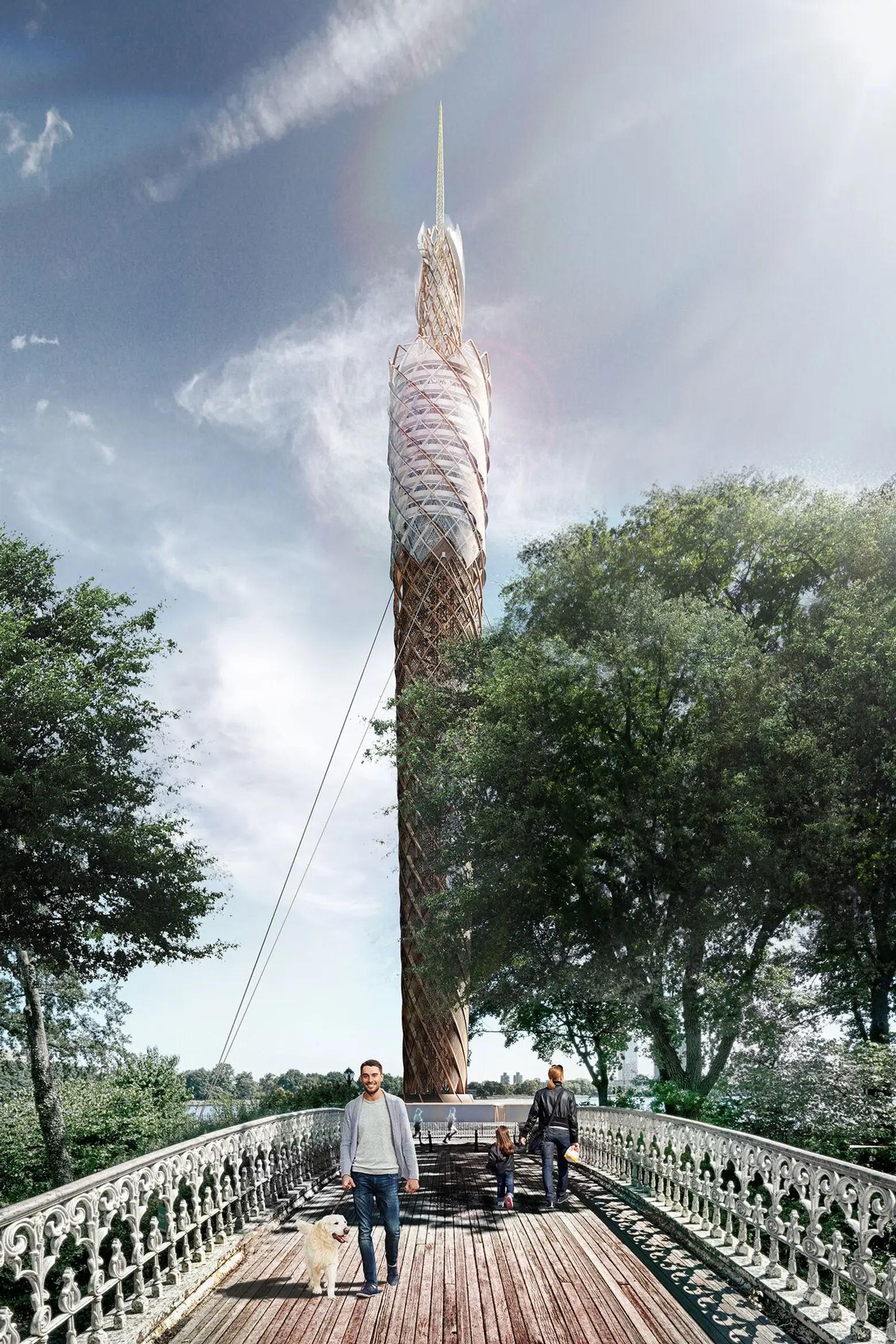
At 106 acres, the Jacqueline Kennedy Onassis Reservoir occupies one-eighth of Central Park’s total area and the equivalent of five football fields. And at 40-feet deep, it contains roughly one billion gallons of contaminated water, the reason why it’s currently fenced off and inaccessible. With this in mind, DFA founder Laith Sayigh feels that her studio’s conceptual project “pushes the boundaries of what we perceive is possible in a city as dense, historic and environmentally vulnerable as ours. The Central Park Tower has the potential to be a model project for other cities aiming to fix existing infrastructure, build tall to capture views and elevate the urban public realm.”
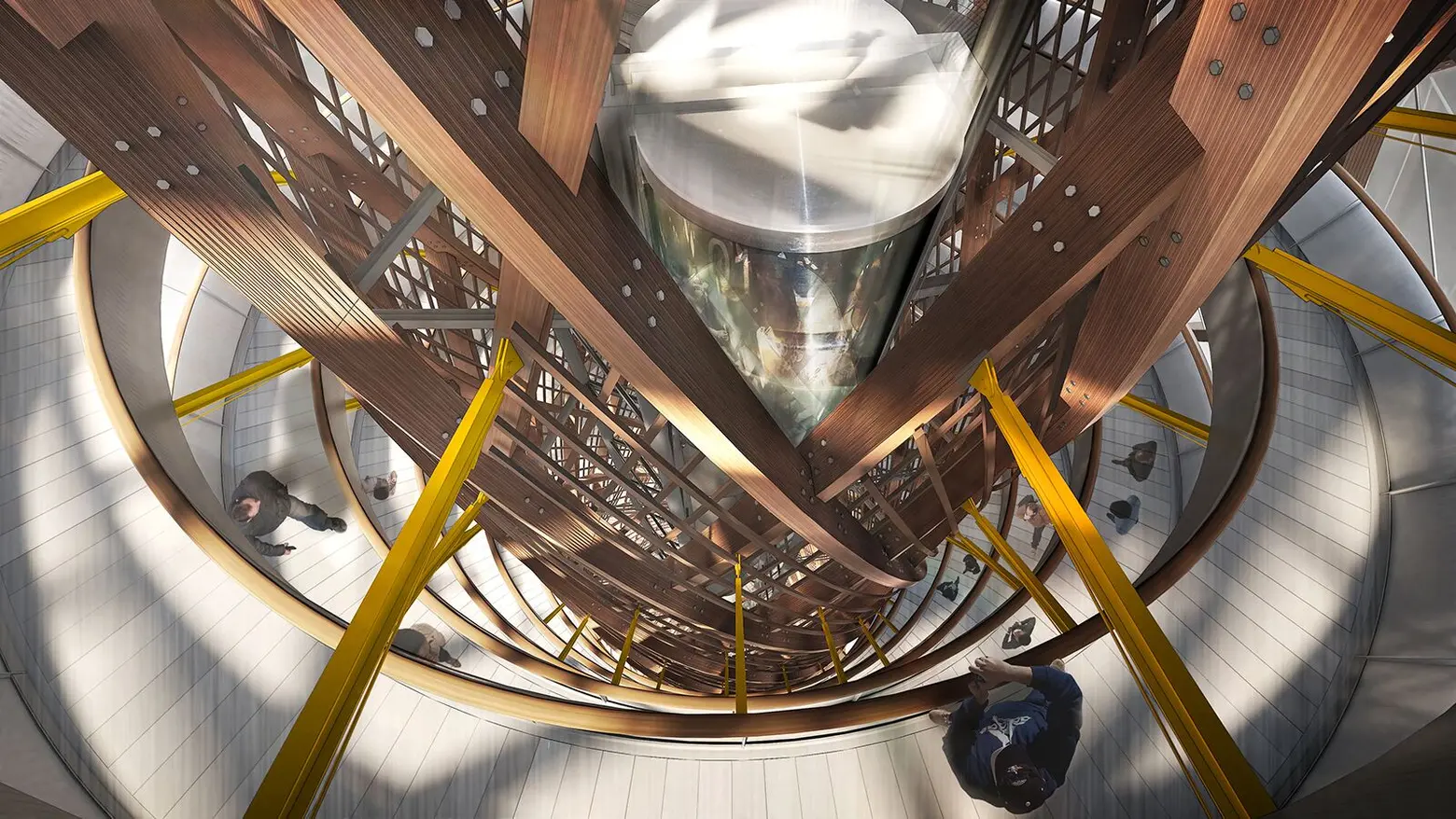
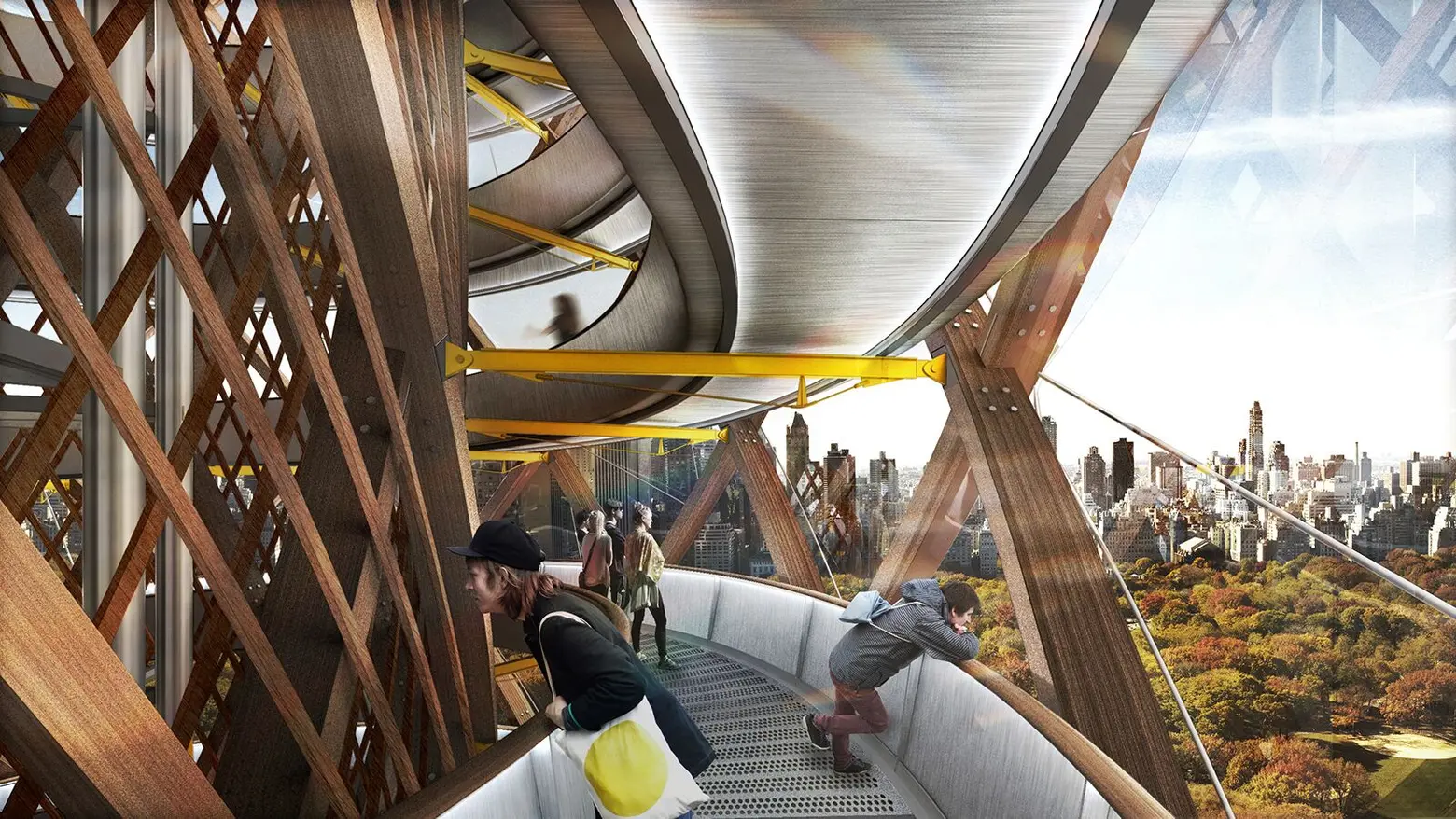
To construct the tower, DFA would use highly advanced Glulam (glue-laminated timber) technology, which requires one-third the energy and creates less than one-tenth of the fossil fuels compared to steel manufacturing. This would allow the structure to be manufactured off-site and erected in the park in less than six months. Its twisting, tapered design is meant to cast minimum shadows on the park and nearby buildings, a major concern as of late with the many tall towers being built on Central Park South, and its facade pattern was inspired by the woven basket designs of the Lenapes who once lived in Manhattan.
Its twisting, tapered design is meant to cast minimum shadows on the park and nearby buildings, a major concern as of late with the many tall towers being built on Central Park South, and its facade pattern was inspired by the woven basket designs of the Lenapes who once lived in Manhattan.
A pre-cast concrete base anchors a series of tensile cables that stabilize the tower. When guests enter, they’ll wind their way through a .42-mile (the exact length of a NYC block) steel ramp that wraps around the interior core from the 375- to 500-foot marks. From 475 to 600 feet is the primary tower, constructed of a “densely configured jointed interlocking woven wood helix.” At the very top is a 112-foot-tall lighting rod/spire.
In terms of the environmental elements, a vertical-axis wind turbine circles around the top 100 feet of the interior wood helix, providing power to filter the water and operate the twin glass-elevators, lighting, and electrical. The water filtration system is within the tower’s steel core and would transform the Reservoir into a place for swimming, sailing, and more.
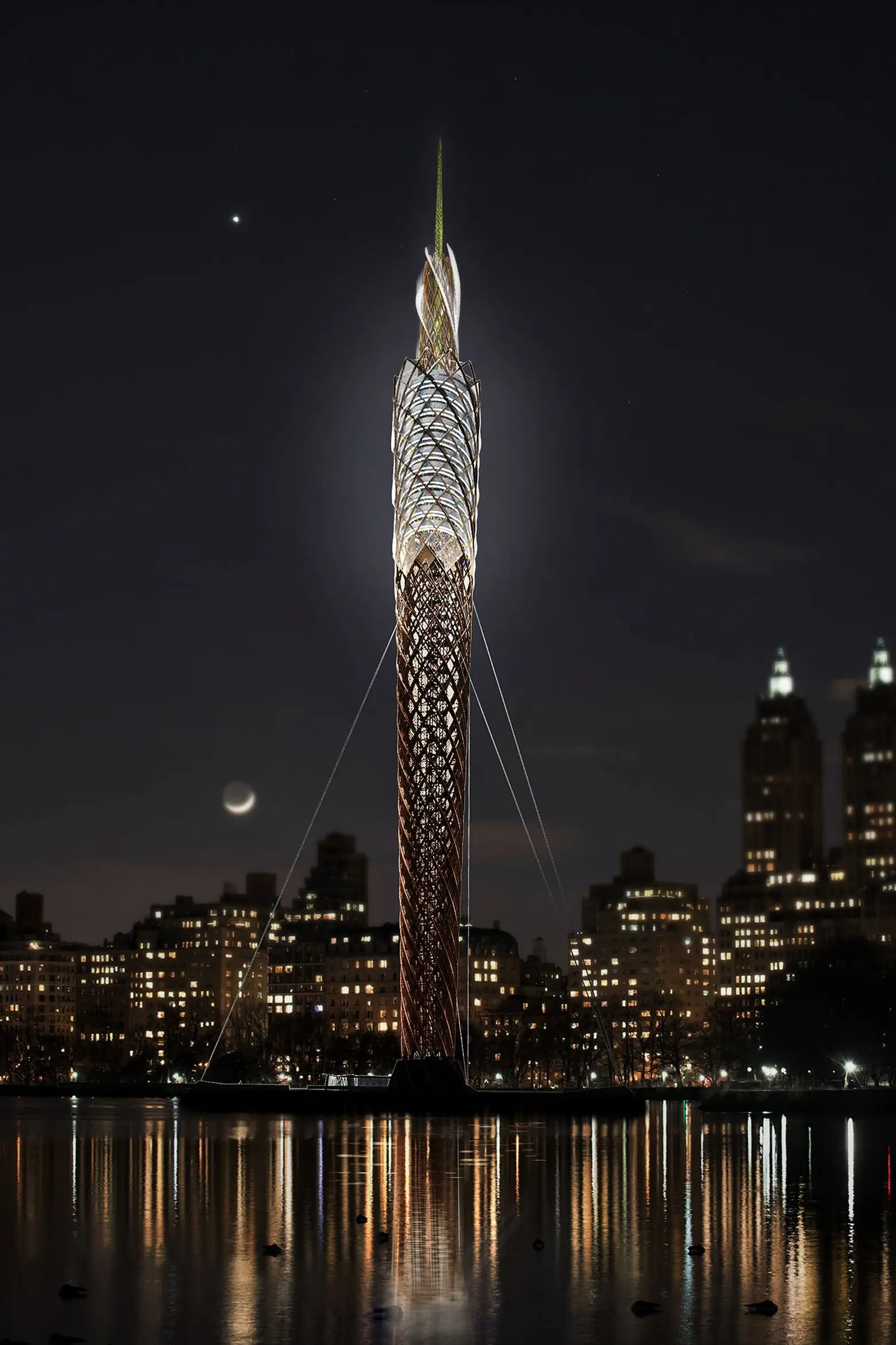
The tower is merely conceptual at this point, as no plans have been filed.
RELATED:
- ODA’s slender-waisted ‘Orbit Tower’ wins the Metals in Construction 2017 Design Challenge
- Lissoni Architettura Conceptualizes a Submerged Aquarium in the East River
- Skyscraper Proposal Digs Out Central Park and Surrounds It With 1,000-Foot Glass Structure
All renderings via DFA
Get Inspired by NYC.
Leave a reply
Your email address will not be published.
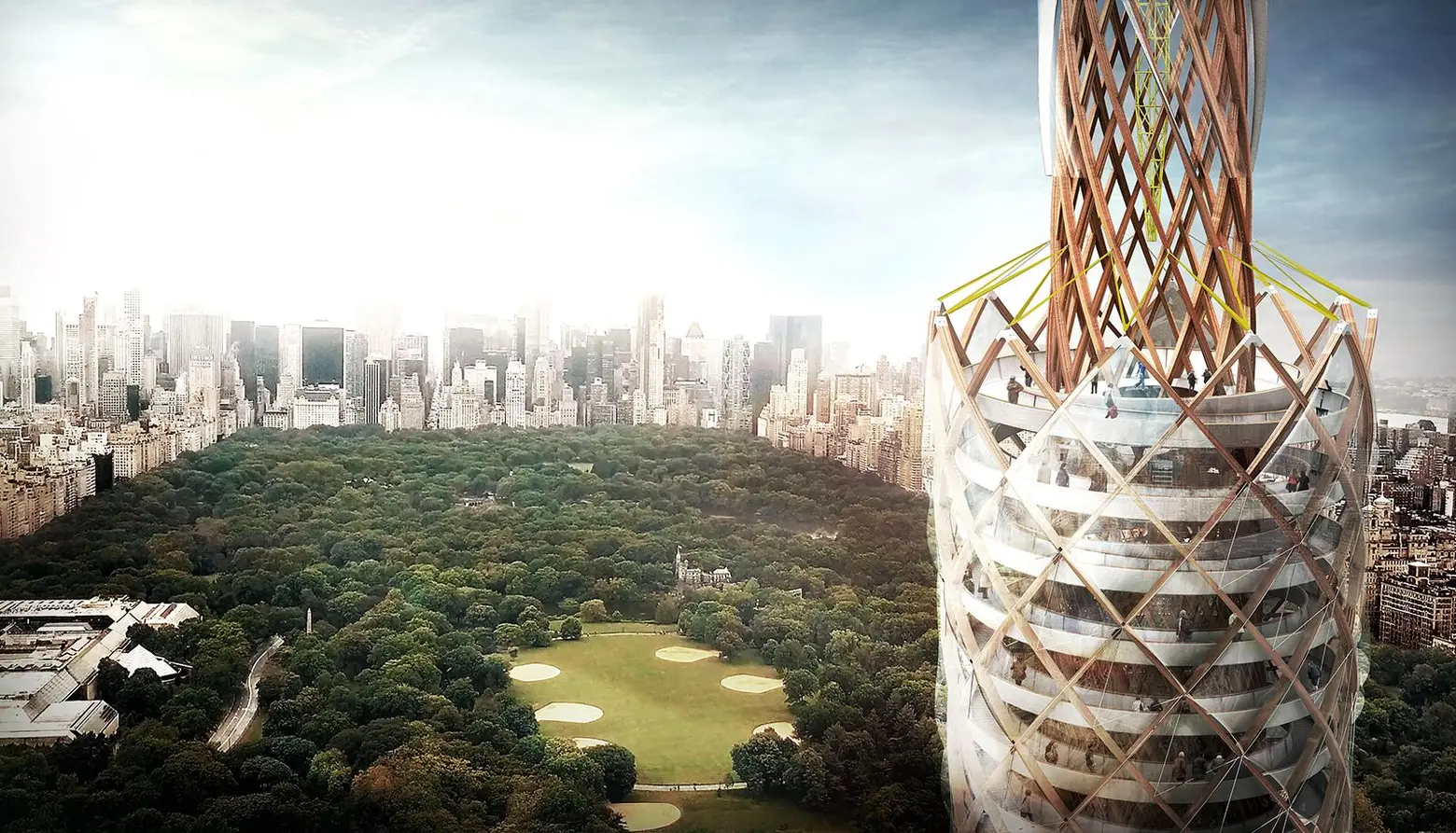
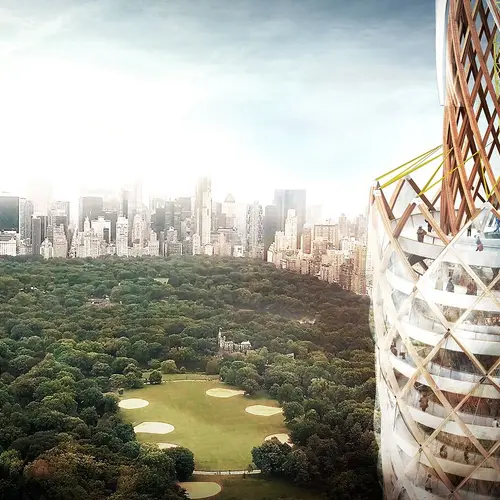
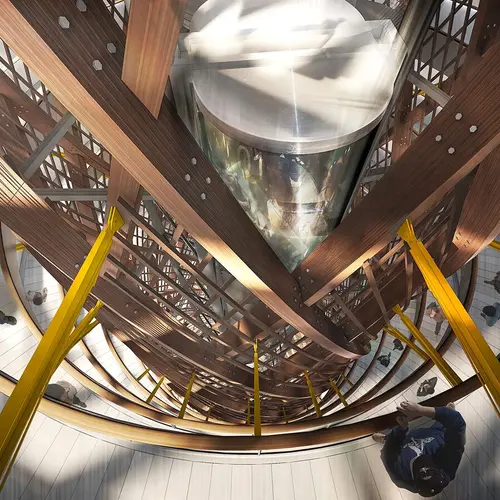
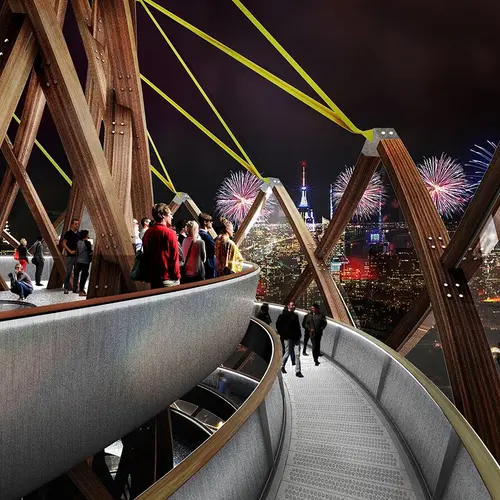
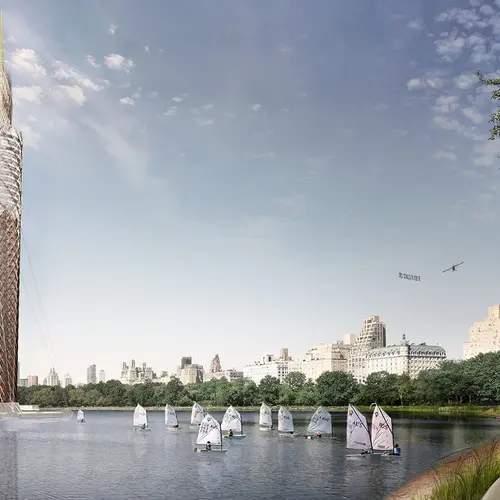
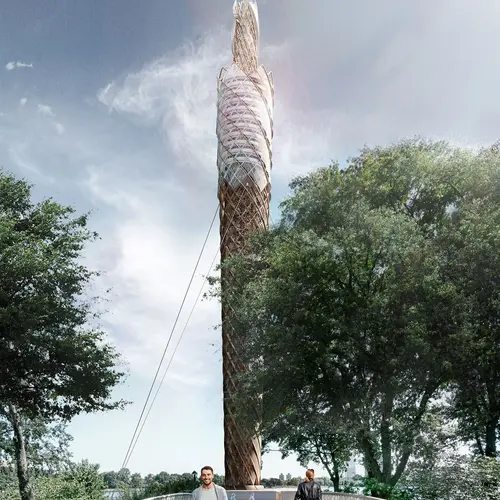
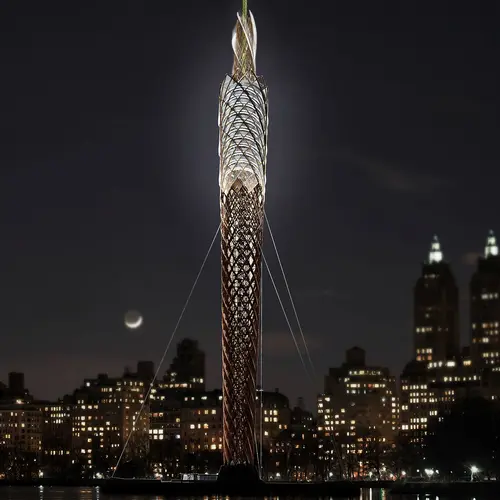
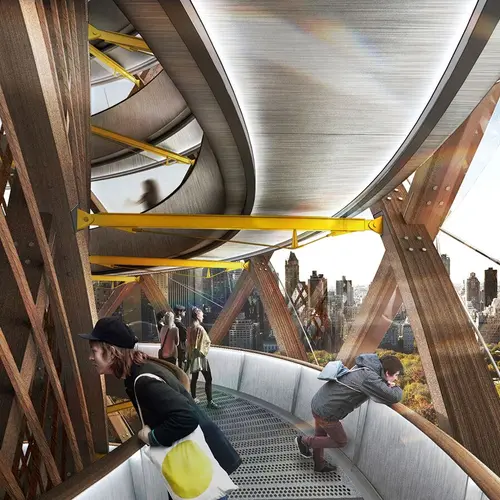
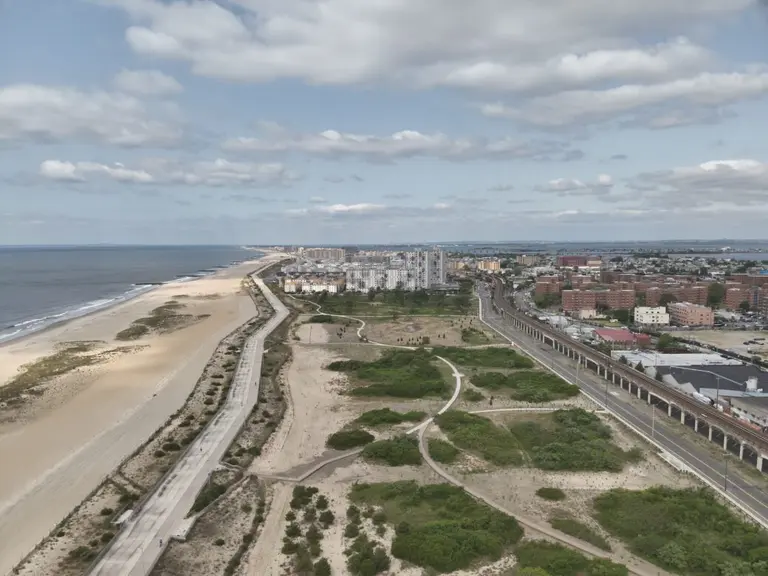

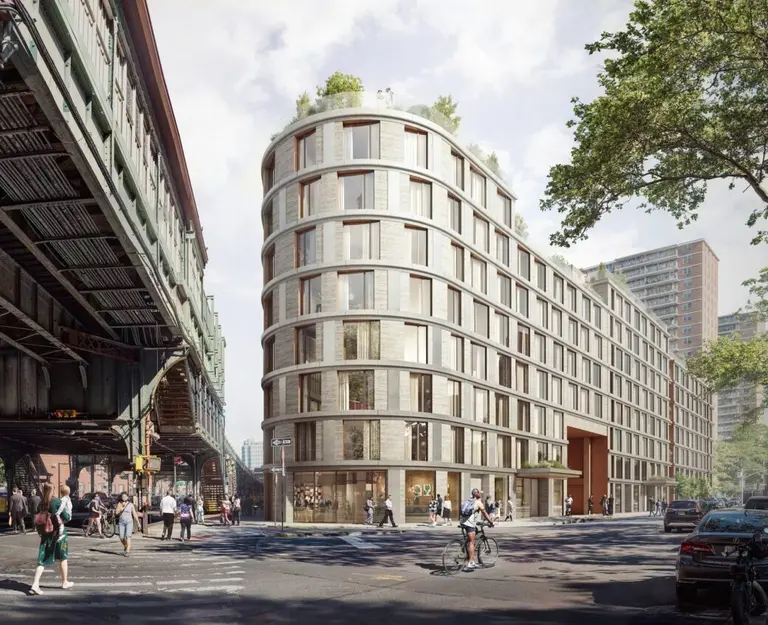
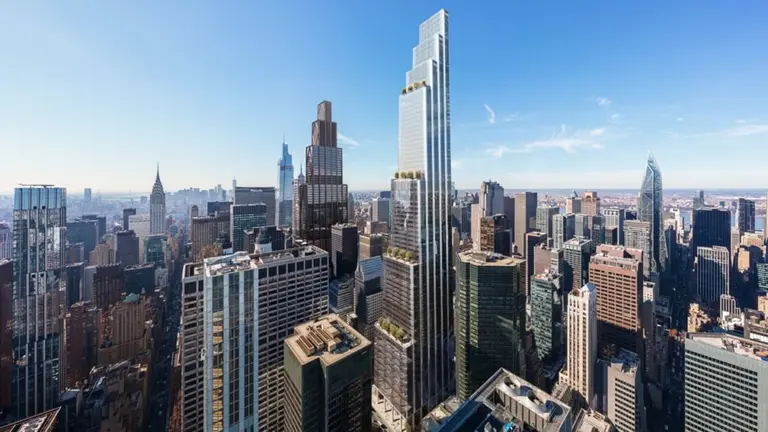
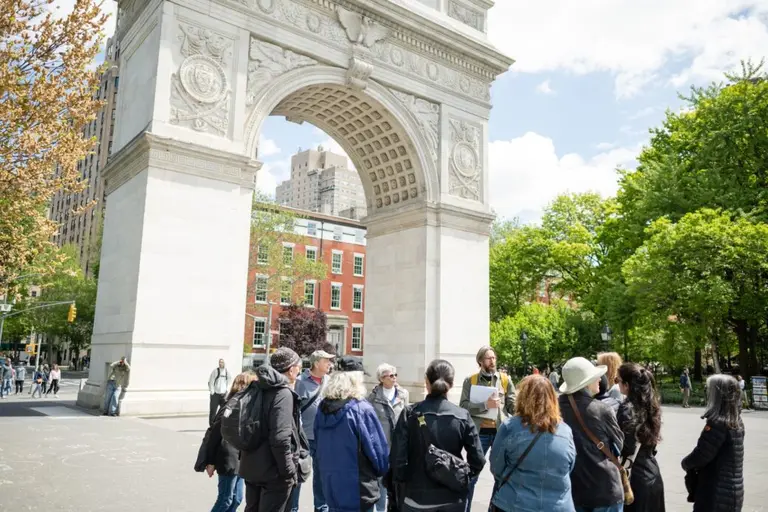

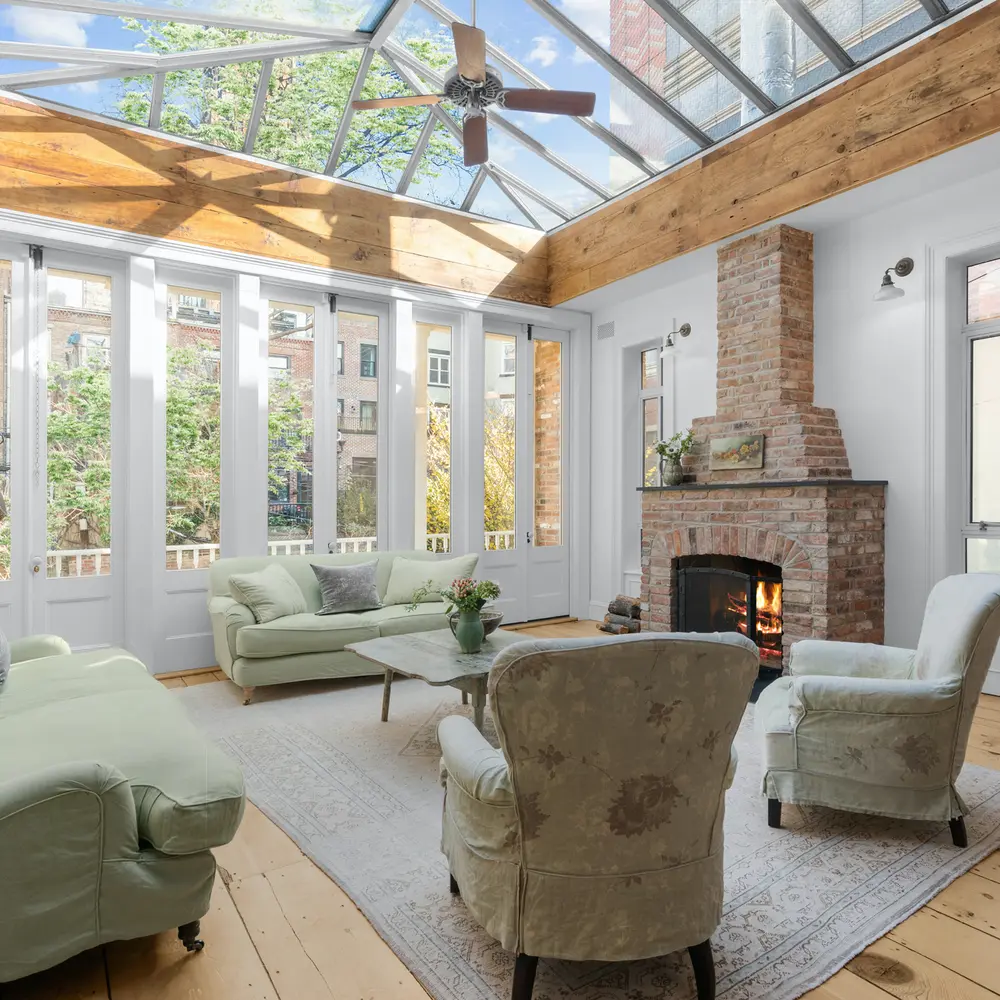
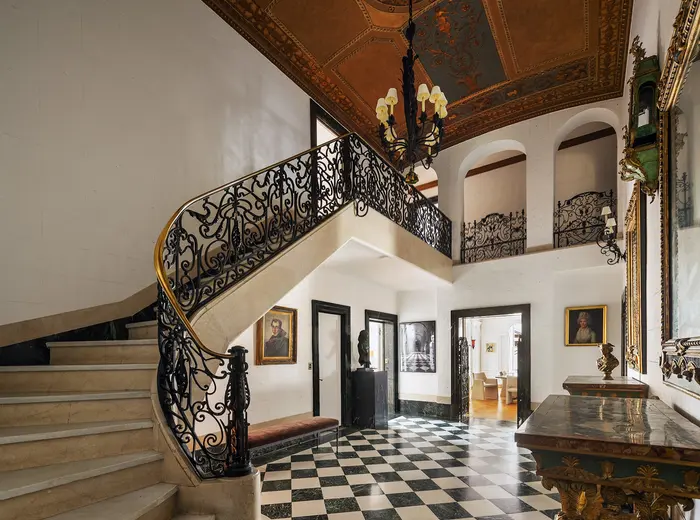
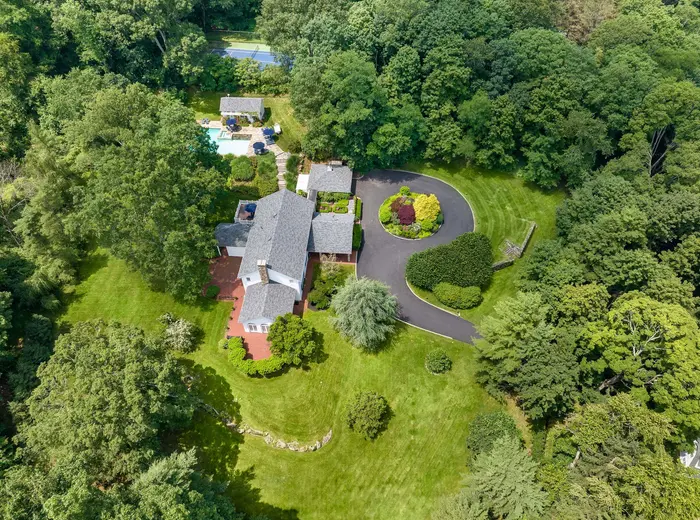
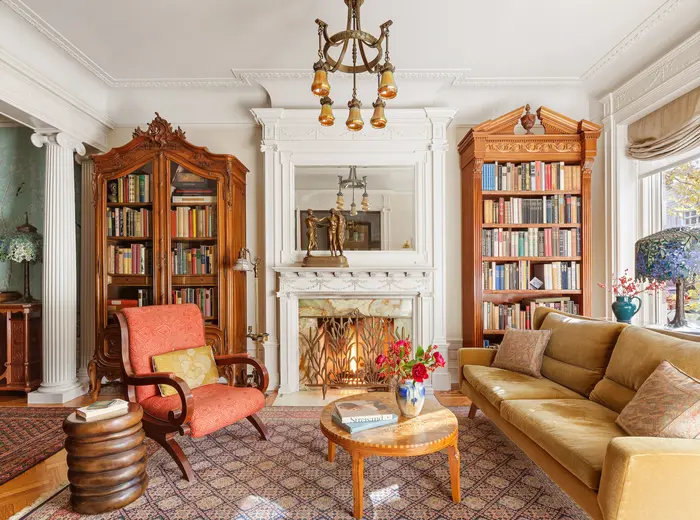


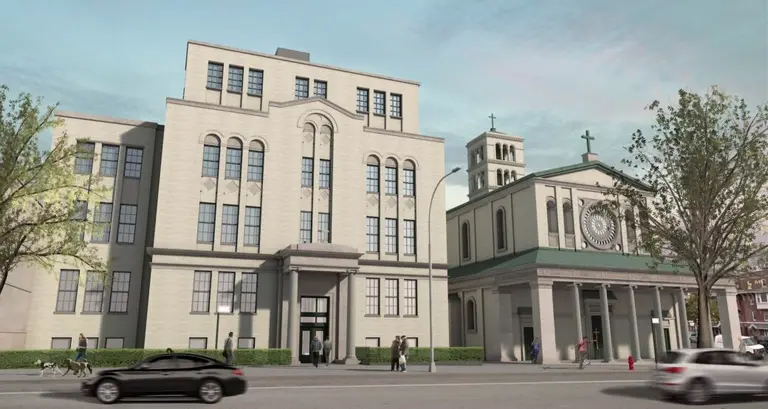
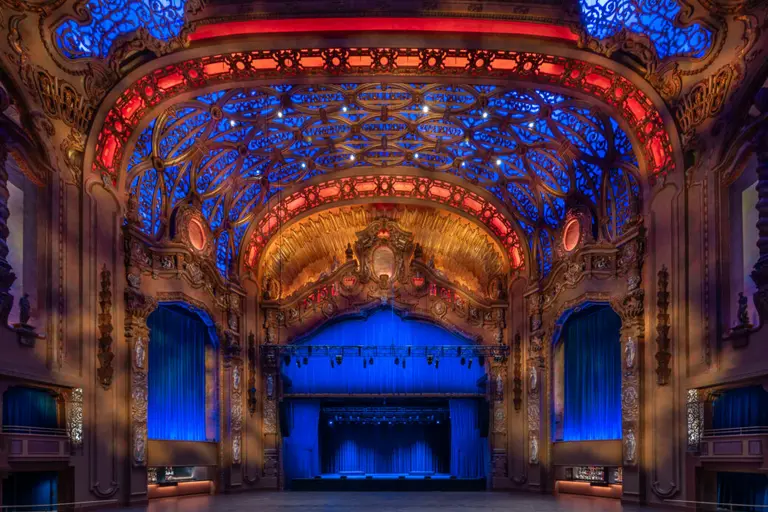
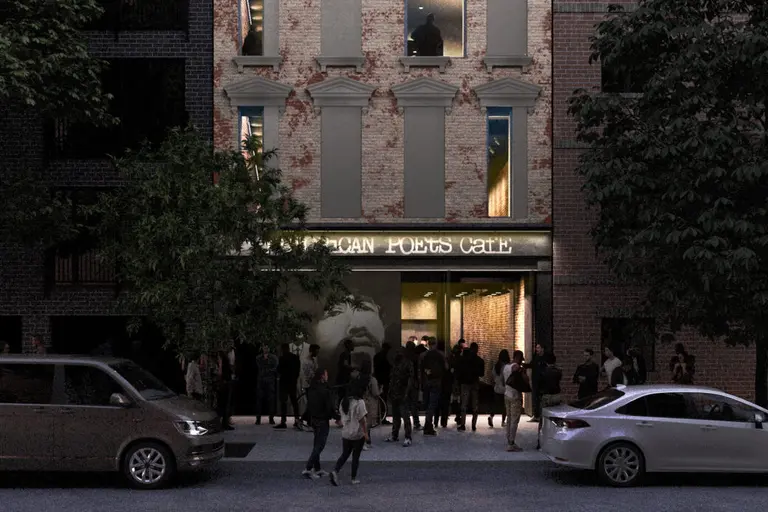

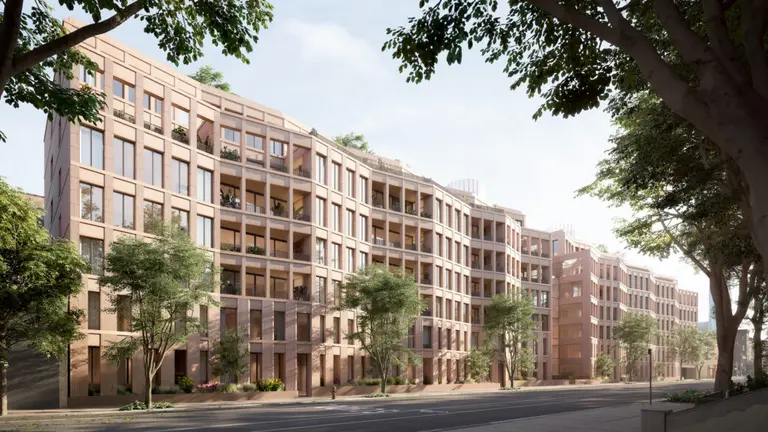











NO
NO
NONO no
Under no circumstances should this monstrosity be built.
And nowhere else have I read that the water in the reservoir is such a concern. It’s not fenced off because the water is contaminated, it’s fenced off, and always has been, so that people can’t get into it at all.
This is a press release, not an article.
This proposal: Stab a giant Q-tip through the heart of Central Park. This is just one of several truly disgusting proposals to irreparably damage the park that have surfaced recently. Who are these people and where did they come from? Could these they really be New Yorkers?
This park was designed by two Geniuses, Calvert Vaux and Frederick Law Olmsted. It cannot be improved except to increase access for those with challenged mobility.
We need to remember this.